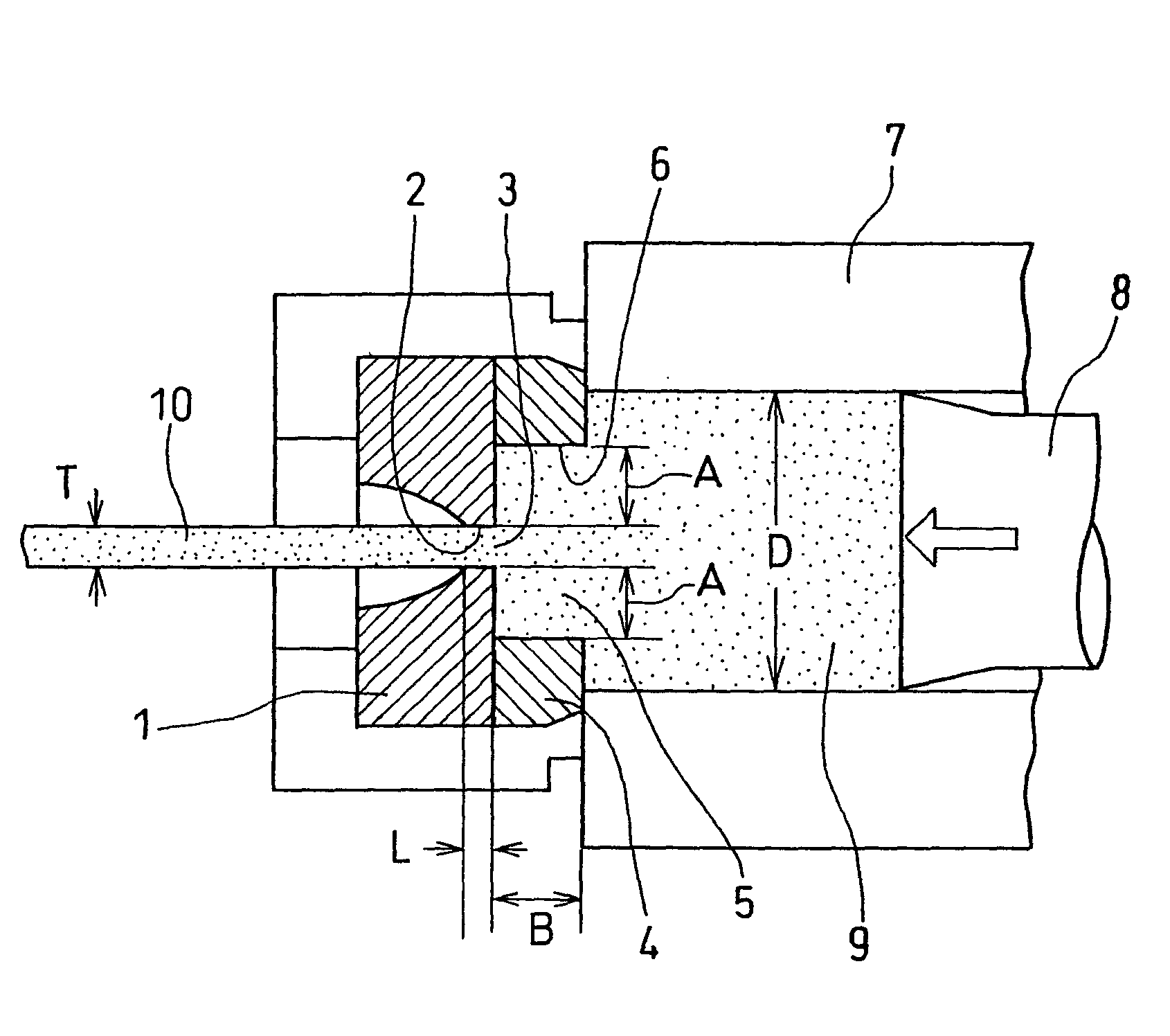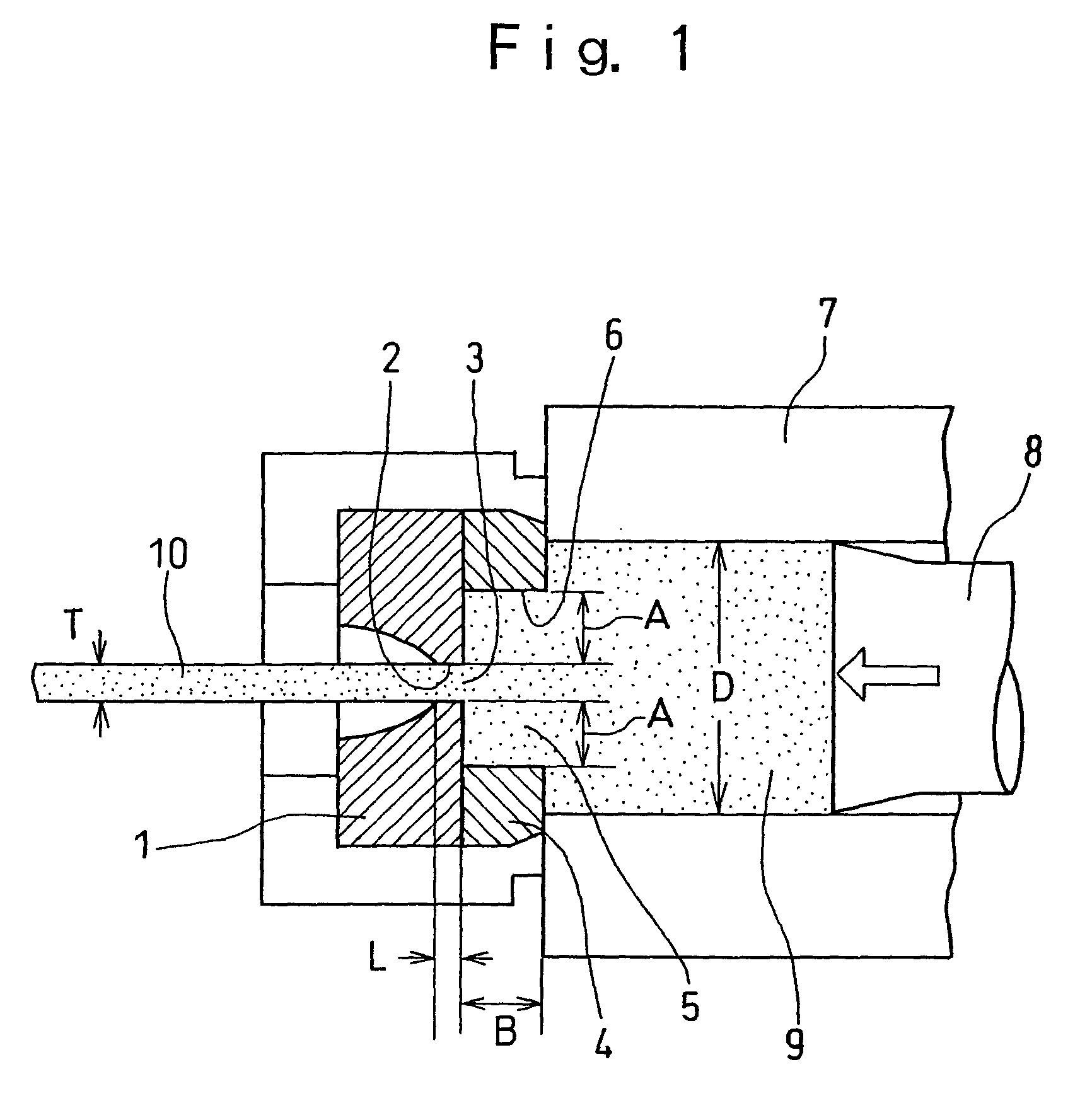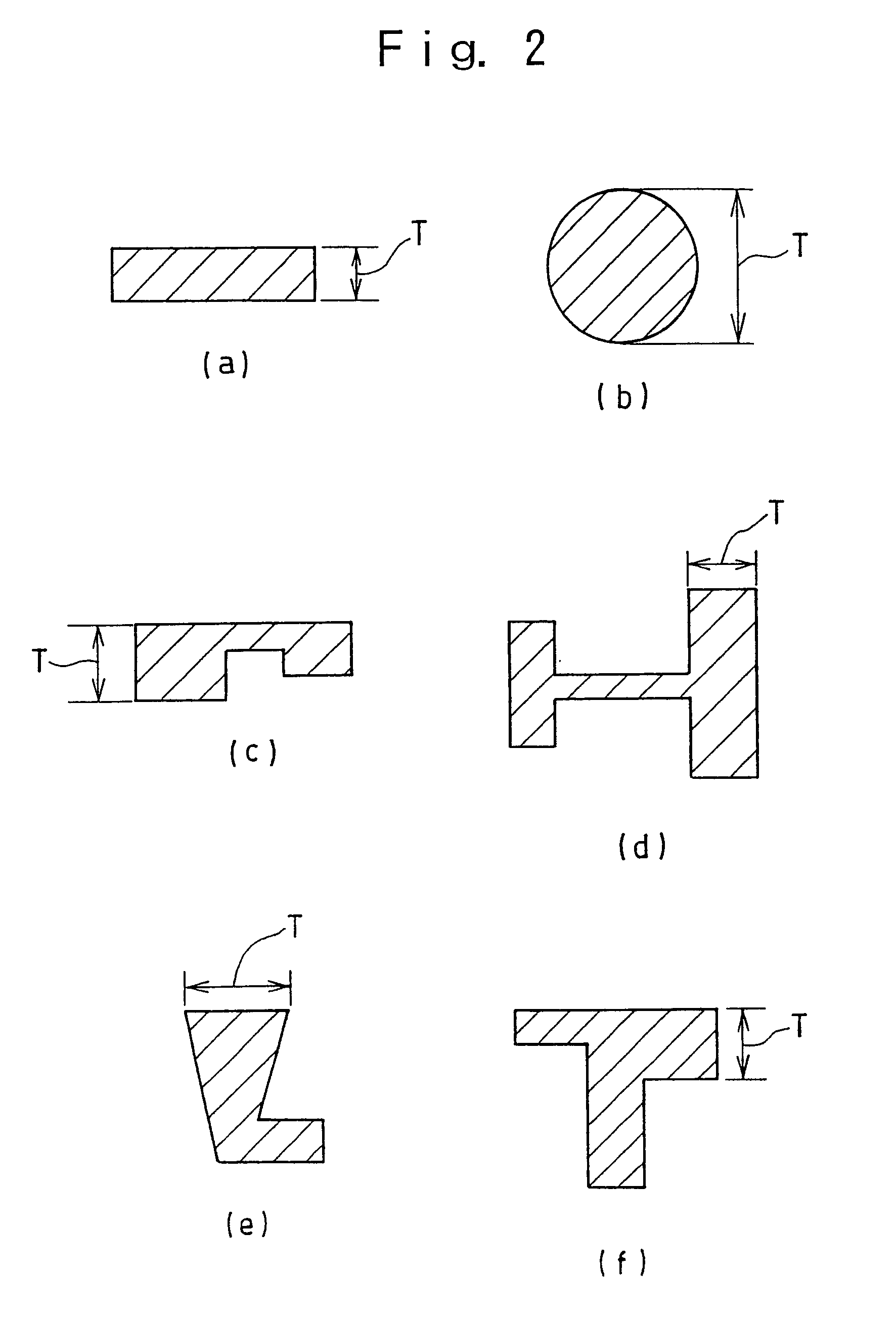Method of manufacturing high-strength aluminum alloy extruded product excelling in corrosion resistance and stress corrosion cracking resistance
- Summary
- Abstract
- Description
- Claims
- Application Information
AI Technical Summary
Benefits of technology
Problems solved by technology
Method used
Image
Examples
example 1
[0048]Aluminum alloys having compositions shown in Table 1 were cast by semi-continuous casting to prepare billets with a diameter of 100 mm. The billets were homogenized at 530° C. for 8 hours, and cooled from 530° C. to 250° C. at an average cooling rate of 250° C. / h to prepare extrusion billets.
[0049]The extrusion billets were heated to 520° C. and extruded by using a solid die at an extrusion ratio of 27 and an extrusion speed of 6 m / min to obtain solid extruded products having a rectangular profile of 12 mm thickness by 24 mm width. The solid die had a bearing length of 6 mm and the corners of its orifice were rounded off with a radius of 0.5 mm. A flow guide attached to the die had a rectangular guide hole with a distance (A) from the inner circumferential surface of the guide hole to the outer circumferential surface of the orifice set at 15 mm, and a thickness (B) of the flow guide set at 15 mm with respect to the billet diameter of 100 mm (i.e. B=15% of the billet diameter)...
example 2
[0063]The aluminum alloy A having the composition shown in Table 1 was cast by semi-continuous casting to prepare billets with a diameter of 100 mm. The billets were heated under varying conditions shown in Table 5, and extruded by using solid dies having varying bearing lengths as shown in Table 5, without providing a flow guide, and under varying extrusion temperatures as shown in Table 5, to produce solid extruded products having a rectangular profile of 12 mm thickness by 24 mm width.
[0064]The solid extruded products were treated by press quenching or quenching under conditions shown in Table 5, and aged artificially under the same aging conditions as in Example 1 to refine the products to T6 temper. In Table 5, the cooling rate after homogenization refers to the average cooling rate from the homogenization temperature to 250° C., the cooling rate for the press quenching refers to the average cooling rate from the material temperature just before the water cooling to 100° C., an...
example 3
[0074]Aluminum alloys having compositions shown in Table 1 were cast by semi-continuous casting to prepare billets with a diameter of 200 mm. The billets were homogenized at 530° C. for 8 hours, and cooled from 530° C. to 250° C. at an average cooling rate of 250° C. / h to prepare extrusion billets. The extrusion billets were extruded (extrusion ratio: 80) at 520° C. into a tubular profile having an outer diameter of 30 mm and an inner diameter of 20 mm using a porthole die designed in such a way that the ratio of the chamber depth D to the bridge width W was 0.5 to 0.6. The ratio of the flow speed of the aluminum alloy in the non-joining section of the chamber to the flow speed of the aluminum alloy in the joining section was 1.2 to 1.4.
[0075]The tubular extruded products thus obtained were subjected to a solution heat treatment at 540° C., and within 10 seconds of its completion, to a water quenching treatment. 3 days after completion of the quenching, an artificial ageing (anneali...
PUM
| Property | Measurement | Unit |
|---|---|---|
| Temperature | aaaaa | aaaaa |
| Temperature | aaaaa | aaaaa |
| Temperature | aaaaa | aaaaa |
Abstract
Description
Claims
Application Information
 Login to View More
Login to View More - R&D
- Intellectual Property
- Life Sciences
- Materials
- Tech Scout
- Unparalleled Data Quality
- Higher Quality Content
- 60% Fewer Hallucinations
Browse by: Latest US Patents, China's latest patents, Technical Efficacy Thesaurus, Application Domain, Technology Topic, Popular Technical Reports.
© 2025 PatSnap. All rights reserved.Legal|Privacy policy|Modern Slavery Act Transparency Statement|Sitemap|About US| Contact US: help@patsnap.com



